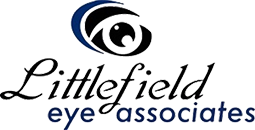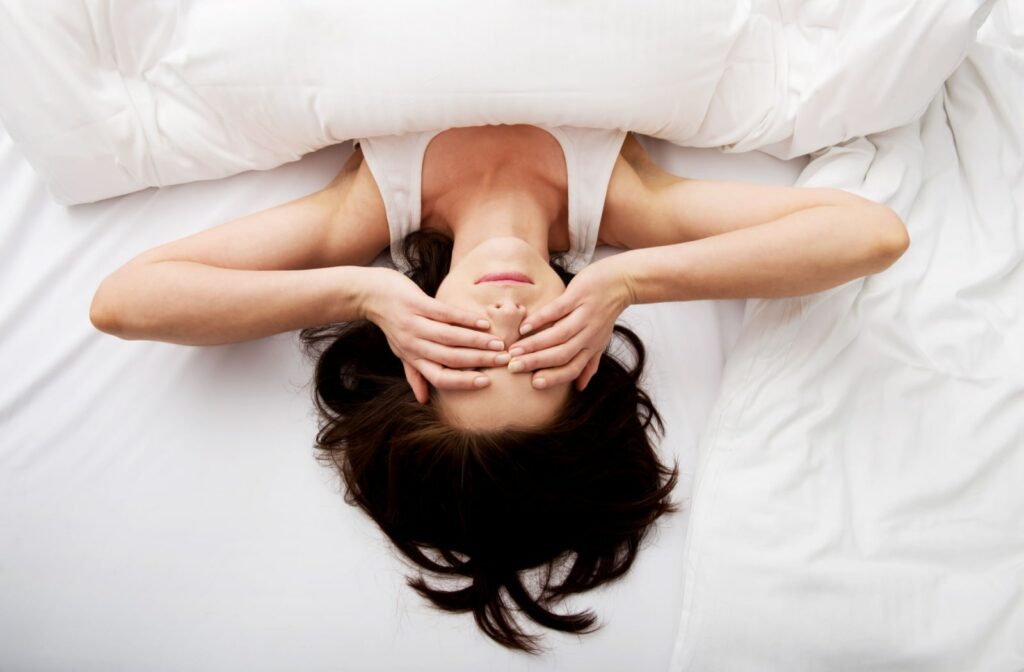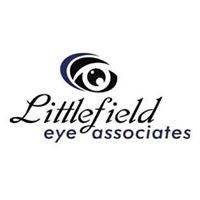Sleeping should be a time to rest and recuperate from a hard day. But if you’re waking up with red, scratchy eyes, your morning can be anything but. If your eyes aren’t getting enough moisture, it can result in vision problems and eye pain. This condition is known as dry eye disease, and it affects millions of Americans daily.
You can help prevent dry eyes while sleeping by using a humidifier, resting your eyes throughout the day, avoiding sleeping with contact lenses, and visiting your optometrist for effective dry eye treatments. The team at Littlefield Eye Associates is here to help you rest easier and see clearer.
What is Dry Eye Disease?
Dry eye disease (DED) is a common condition that affects millions of Americans, many over 50. This ocular surface disease is characterized by an insufficient production of tears or poor quality tears, which leads to symptoms that range from mild to severe, including:
- Stinging, scratchy, or burning irritation
- Inflammation
- Redness
- Sensitivity to light
- Watery eyes
- Stringy mucus
- Blurry vision
- Difficulty wearing contact lenses
Your tears are vital to your eye’s ongoing health. If left untreated, dry eye disease can leave your eyes open to damage, as your tears are unable to wash away harmful debris.
Causes of Dry Eye Disease
Many things can disrupt your tears’s delicate balance, but by understanding the risk factors you can be proactive about your eye health.
Some factors that could increase your risk of developing dry eye disease include:
- Age: As we age, tear production naturally decreases. Therefore, individuals over the age of 65 are more susceptible to developing dry eye disease.
- Gender: Women are more likely to develop dry eye disease. This may be due to hormonal changes during pregnancy, the use of oral contraceptives, or menopause.
- Medications: Certain medications such as antihistamines, decongestants, blood pressure medications, and antidepressants can reduce tear production.
- Medical conditions: People with rheumatoid arthritis, diabetes, thyroid problems, or inflammation of the eyelids (blepharitis) are at a higher risk of developing dry eye disease.
- Environmental conditions: Exposure to smoke, wind, or dry climates can increase tear evaporation.
- Prolonged screen time: Spending long periods on digital devices can decrease blinking rate, contributing to dry eyes.
- Contact lens use: Overwearing contact lenses can be a factor in the development of dry eye disease.
- Refractive eye surgeries: Procedures like LASIK can decrease tear production and contribute to dry eye symptoms, usually only for a short period.
Preventing Dry Eyes at Night
Once your optometrist uncovers why your eyes are drying out, we can recommend treatment plans to hopefully stop dryness and irritation before it starts. Some of these can be as simple as lifestyle changes.
Use a Humidifier
A humidifier works by adding moisture to the air. You can place a humidifier in your bedroom and let it run during the night to keep a comfortable level of humidity. This could help your eyes and mucous membranes retain moisture so you can wake up with less eye irritation.
Take Regular Screen Breaks During the Day
Blinking is a natural way of releasing tears, which helps keep your eyes moist. However, we tend to blink less while working on a computer. After a long day, your eyes can feel exhausted, which can contribute to dry eyes at night.
Take moments throughout the day to rest your eyes. Follow the 20-20-20 rule. Every 20 minutes, look at something 20 feet away for 20 seconds.
Avoid Sleeping with Contact Lenses
Wearing contact lenses can cause dry eyes, especially if you fall asleep with them. Soft lenses can absorb eye moisture, leaving them dry and irritated. Avoid sleeping with contact lenses, and if possible, switch to glasses for a couple of hours before going to bed.
Consider Omega-3 Supplements
Our body works together to stay healthy. So changing your diet can affect your tear health, and studies have found that omega-3 fatty acids are crucial to maintaining comfortable vision. These nutrients are normally found in fish, but your optometrist may suggest you support your intake by taking fish oil supplements.
How Your Optometrist Treats Dry Eyes
While many people experience temporary dry eye symptoms, chronic irritation can leave your nights restless and your days uncomfortable. Littlefield Eye Associates offers personalized treatment plans aimed at restoring your tear health. The most common treatment for dry eyes is lubricating eye drops, also known as artificial tears.
These over-the-counter eye drops can replenish lost moisture and lubricate the eyes. However, you should consult your doctor before using any eye drops, as some may have preservatives and chemicals that could worsen your condition or damage your contact lenses. Some dry eye symptoms may require prescription eye drops to deal with inflammation.
If your tears are draining too fast, we may recommend punctal plugs. An optometrist inserts these tiny devices into the tear ducts. By blocking the tear ducts, punctal plugs can help keep tears on the eye’s surface for longer periods, potentially reducing dryness and irritation. There are different types of punctal plugs, including temporary and semi-permanent options.
IPL Therapy for Dry Eyes
IPL therapy is a non-invasive treatment that involves using intense pulsed light to reduce inflammation around the meibomian glands in the eyelids. These glands produce the oils that prevent your tears from evaporating too fast.
When the meibomian glands are inflamed, they can block the flow of oil, leading to dry eyes. IPL therapy works by targeting the inflamed glands with gentle pulses of light, which break down the blockage and help the oil flow more freely. This treatment can take as little as 10 minutes and is usually done as a series of sessions.
Littlefield Eye Associates offers OptiLight by Lumenis to our patients, specially designed for dry eye management. OptiLight by Lumenis is a light-based, non-invasive treatment done in the area below the eyes to manage dry eye. The first and only IPL FDA-approved for dry eye management.
What Treatment is Right for Me?
In some cases, we may recommend using a combination of treatments and lifestyle changes to address dry eye symptoms. There’s no one-size-fits-all answer to dry eye disease, but with Littlefield Eye Associates’ expert team at your back, we can help you wake up without irritating dryness.
If you’re experiencing dry eyes in the morning, or any time of day, don’t wait! Book your eye exam today and get the relief you deserve.





